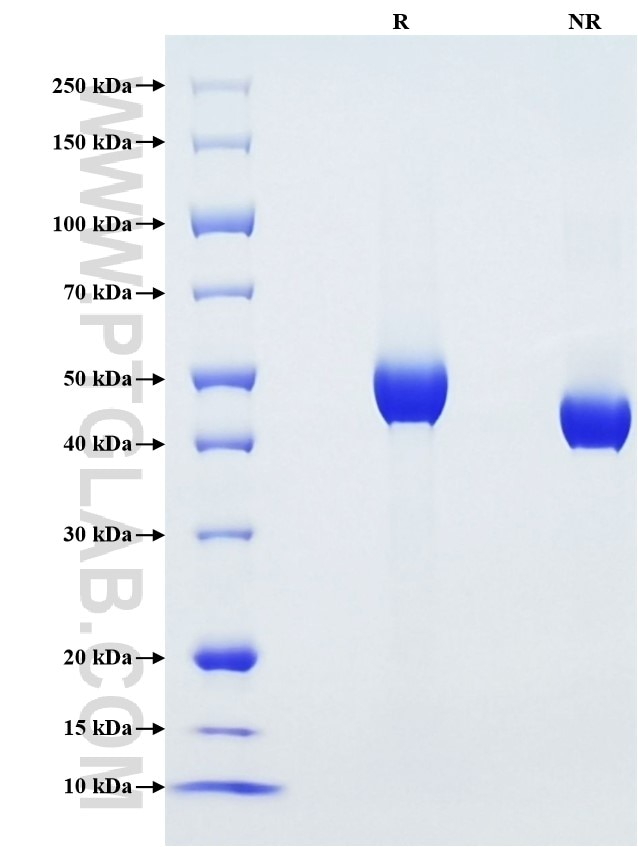Recombinant Human CD5 protein (His Tag)
Species
Human
Purity
>90 %, SDS-PAGE
Tag
His Tag
Activity
not tested
Cat no : Eg1119
Validation Data Gallery
Product Information
| Purity | >90 %, SDS-PAGE |
| Endotoxin | <0.1 EU/μg protein, LAL method |
| Activity |
Not tested |
| Expression | HEK293-derived Human CD5 protein Arg25-Pro372 (Accession# P06127) with a His tag at the C-terminus. |
| GeneID | 921 |
| Accession | P06127 |
| PredictedSize | 39.7 kDa |
| SDS-PAGE | 42-55 kDa, reducing (R) conditions |
| Formulation | Lyophilized from 0.22 μm filtered solution in PBS, pH 7.4. Normally 5% trehalose and 5% mannitol are added as protectants before lyophilization. |
| Reconstitution | Briefly centrifuge the tube before opening. Reconstitute at 0.1-0.5 mg/mL in sterile water. |
| Storage Conditions |
It is recommended that the protein be aliquoted for optimal storage. Avoid repeated freeze-thaw cycles.
|
| Shipping | The product is shipped at ambient temperature. Upon receipt, store it immediately at the recommended temperature. |
Background
CD5 is a type I transmembrane glycoprotein of the scavenger receptor cysteine-rich family. CD5 is expressed on a majority of thymocytes, mature T cells, B cell subsets, and peripheral blood dendritic cells. CD5 may act as a receptor in regulating T-cell proliferation. It functions as a negative regulator of TCR signaling during thymocyte development.
References:
1. J A Ledbetter, et al. (1980) J Exp Med. 152(2):280-95. 2. G S Wood, et al. (1992) Am J Pathol. 141(4):789-95. 3. A Tarakhovsky, et al. (1995) Science. 269(5223):535-7. 4. H S Azzam, et al. (1998) J Exp Med. 188(12):2301-11. 5. P Youinou, et al. (1999) Immunol Today. 20(7):312-6. 6. Chander Raman, et al. (2002) Immunol Res. 26(1-3):255-63.

